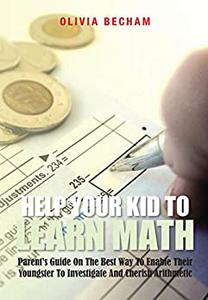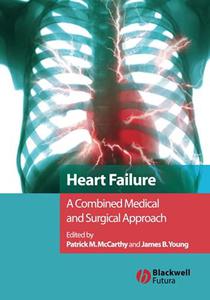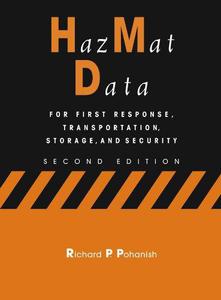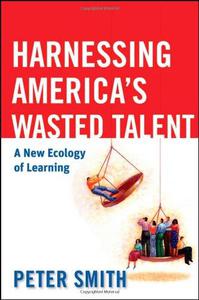 Handbuch Technischer Lawinenschutz By
Handbuch Technischer Lawinenschutz By2011 | 479 Pages | ISBN: 3433029474 | PDF | 9 MB
This book provides an overview of the fundamentals and classification of technical avalanche protection. It describes in detail the design, construction and maintenance of protection structures as well as temporary technical measures.Content: Chapter 1 Einfuhrung (pages 1-11): DI Siegfried Sauermoser and DI Dr. Florian Rudolf?MiklauChapter 2 Entwicklung der Lawinen und des Lawinenschutzes: Historischer Uberblick (pages 13-20): DI Siegfried Sauermoser, Dr. Markus Stoffel and Dipl. Bauing. ETH Stefan MargrethChapter 3 Lawinen: Entstehung und Wirkung (pages 21-62): DI Patrick Nairz, DI Siegfried Sauermoser, Dr. Karl Kleemayer, Dr. Karl Gabl, Dr. Markus Stoffel and Dipl. Bauing. ETH Stefan MargrethChapter 4 Grundlagen und Modelle der Lawinendynamik und Lawinenwirkung (pages 63-101): DI Siegfried Sauermoser, DI Matthias Granig, Dr. Karl Kleemayr and Dipl. Bauing. ETH Stefan MargrethChapter 5 Analyse, Bewertung und planliche Darstellung von Lawinengefahren (?risiken) (pages 103-128): DI Christoph Skolaut, DI Dr. Florian Rudolf?Miklau and Dr. Markus StoffelChapter 6 Planung von permanenten technischen Lawinenschutzma?nahmen (pages 129-158): DI Dr. Florian Rudolf?Miklau and DI Siegfried SauermoserChapter 7 Permanenter technischer Lawinenschutz: Schutzsysteme und Bautypen (pages 159-205): DI Wolfgang Schilcher, Dipl. Bauing. ETH Stefan Margreth, DI Siegfried Sauermoser, DI Christoph Skolaut, Mag. Michael Molk and DI Dr. Florian Rudolf?MiklauChapter 8 Permanenter Technischer Lawinenschutz: Bemessung und Konstruktion (pages 207-293): Dipl. Bauing. ETH Stefan Margreth, DDI. Dr. Jurgen Suda, Dr. Robert Hofmann, Dr. Peter Gauer, DI Siegfried Sauermoser, DI Wolfgang Schilcher and DI Christoph SkolautChapter 9 Bauausfuhrung und Erhaltungsmanagement (pages 295-362): DI Dr. Florian Rudolf?Miklau, DI. Wolfgang Schilcher, Dipl. Bauing. ETH Stefan Margreth, DI. Gebhard Walter and DDI. Dr. Jurgen SudaChapter 10 Gebaude? und Objektschutz (pages 363-377): DDI. Dr. Jurgen Suda, DI Siegfried Sauermoser, DI Christoph Skolaut and DI Dr. Florian Rudolf?MiklauChapter 11 Temporarer Lawinenschutz (pages 379-394): Dipl. Bauing. ETH Lukas Stoffel, DI Patrick Nairz and DI Siegfried SauermoserChapter 12 Lawinenbeobachtung (Monitoring) und Ereignisdokumentation (pages 395-408): Dr. Karl Kleemayr, DI. Patrick Nairz, DI Dr. Florian Rudolf?Miklau and Dr. Karl GablChapter 13 Technischer Lawinenschutz international: Zahlen und Fakten (pages 409-432): DI Dr. Florian Rudolf?Miklau, Dipl. Bauing. ETH Stefan Margreth, Francois Rapin, Bernhard Zenke, Yasuo Ishii, Rudolf Pollinger, Krister Kristensen, Tomas Johannesson, Pere Oller, Art Mears and Chris StethamChapter 14 Zusammenfassung und Ausblick (pages 433-434): DI Siegfried Sauermoser and DI Dr. Florian Rudolf?Miklau



![S.T.A.L.K.E.R. 2 / STALKER 2: Heart of Chornobyl - Ultimate Edition (2024) [+UPDATE 23.12.2024 - v1.1.3] ElAmigos / Polska wersja językowa](https://i.postimg.cc/Zqd8RWGY/UZG8PBE.jpg)



















































![David Gilmour - Luck and Strange (2024) [FLAC]](https://i.imgur.com/everaBc.jpeg)
![Męskie Granie Orkiestra - Męskie Granie 2024 (2024) [FLAC]](https://i.imgur.com/FAyOxrM.jpeg)
![The Rolling Stones - Hackney Diamonds (2023) [FLAC]](https://i.imgur.com/wCkyyUN.jpg)
![Lady Gaga - Harlequin (2024) [FLAC]](https://i.imgur.com/dcgIA8D.jpeg)
![Natalia Kukulska - Dobrostan (2024) [FLAC]](https://i.imgur.com/bdljG3O.jpeg)
![Kaśka Sochacka - Ta druga (2024) [FLAC]](https://i.imgur.com/hORQKvn.jpeg)
![Kuba Sienkiewicz - Pani Bóg (2024) [FLAC]](https://i.imgur.com/qijCx8Z.jpeg)
![Lanberry - Heca (2024) [FLAC]](https://i.imgur.com/8P7QfeR.jpeg)
![Sara James - PLAYHOUSE (2024) [FLAC]](https://i.imgur.com/m4f8OKg.jpeg)
![Grzegorz Hyży - EPILOG (2024) [FLAC]](https://i.imgur.com/8DA2sBr.jpeg)
![Myslovitz - WIECZORAMI CHŁOPCY WYCHODZĄ NA ULICE (2024) [FLAC]](https://i.imgur.com/l9mMtIG.jpeg)
![Krzysztof Zalewski - ZGŁOWY (2024) [FLAC]](https://i.imgur.com/vh48RAc.jpeg)
![Krzysztof Cugowski - Wiek to tylko liczba (2024) [FLAC]](https://i.imgur.com/SBzgqe2.jpeg)
![Nosowska - Kasia i Błażej (2024) [FLAC]](https://i.imgur.com/mObvVXQ.jpeg)
![sanah - Pianinkowe Kaprysy (2024) [FLAC]](https://i.imgur.com/pVjjPAa.jpeg)
![Kwiat Jabłoni - Pokaz slajdów (2023) [FLAC]](https://i.imgur.com/diERHfZ.jpg)
![Robert Cichy - Spacer po Warszawie (2024) [FLAC]](https://i.imgur.com/ixleU9o.jpeg)
![Viki Gabor - Terminal 3 (2024) [FLAC]](https://i.imgur.com/Q1KCnDs.jpeg)
![Sanah - Kaprysy (2024) [FLAC]](https://i.imgur.com/71OZm4h.jpeg)
![Męskie Granie Orkiestra - Męskie Granie 2023 (2023) [FLAC]](https://i.imgur.com/U4YHo8d.jpg)




